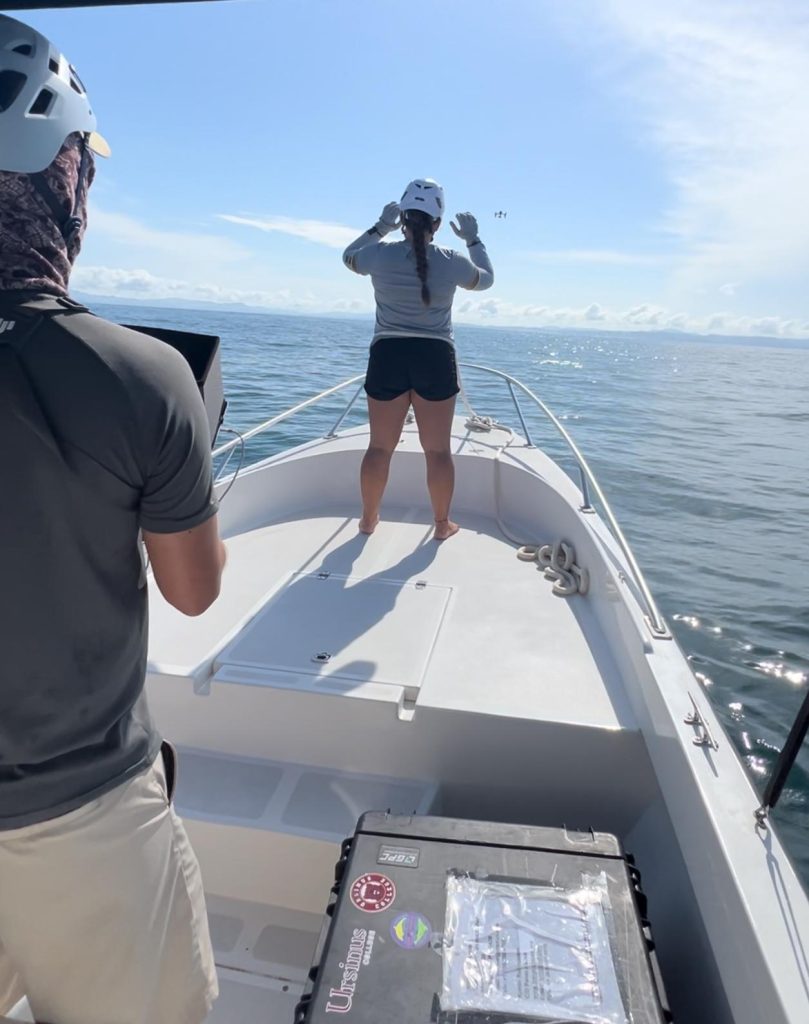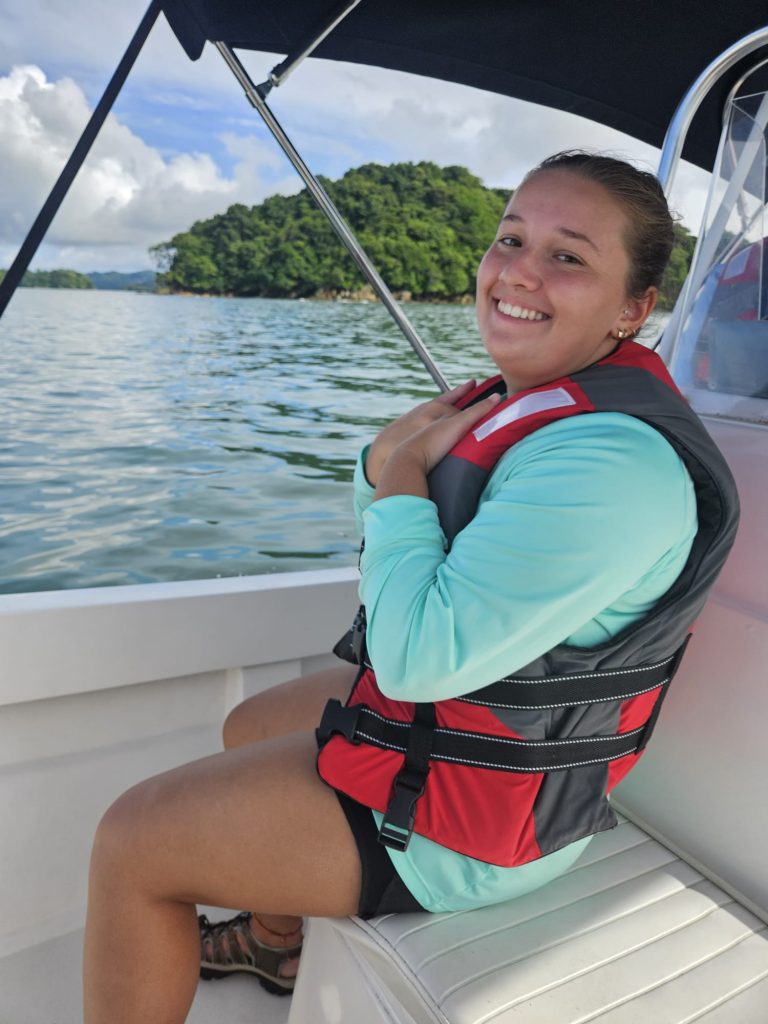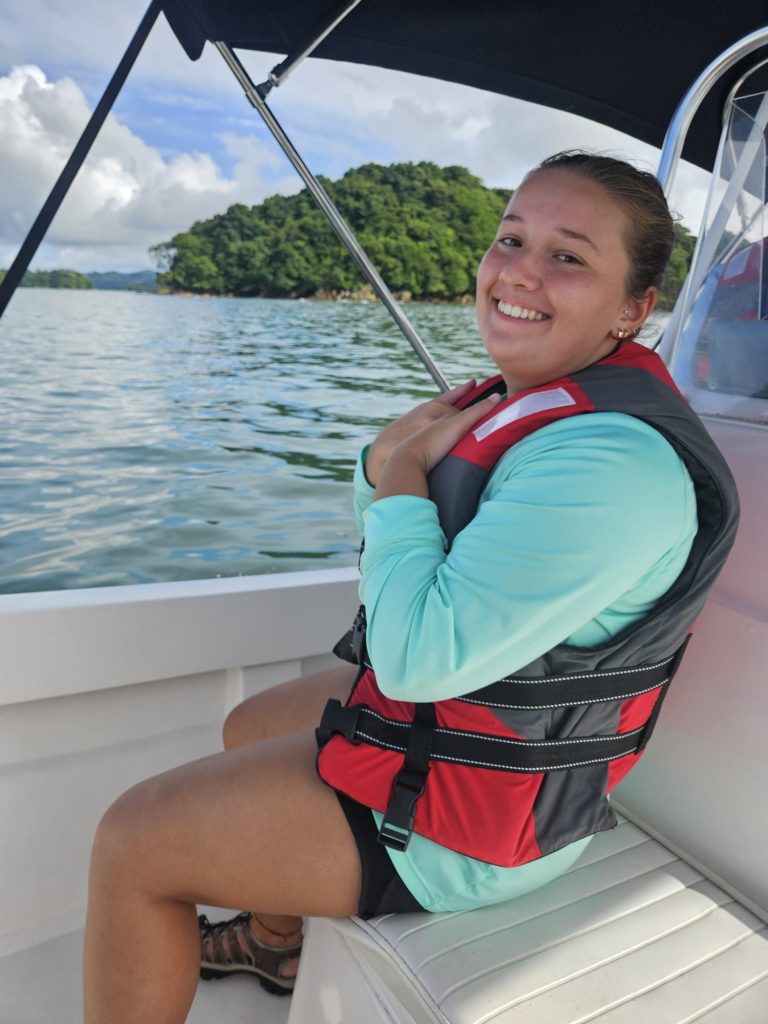By Makayla Baessler
Before coming to Panama, I completed a summer program at my college, Ursinus College, where I worked with Dr. Matthew Leslie to prepare for fieldwork in this collaboration with Panacetacea. We spent a lot of our time testing and preparing the equipment that would be coming with us to Panama. This included a drone, suction cup tags, and UHF (ultra-high frequency) equipment used to retrieve the tags. All these tools play a valuable role in collecting data that will allow us to continue studying humpback whales, as well as begin to understand the enigmatic Bryde’s whales. During these eight weeks on campus, we discussed all the methods we would be using, and I did a lot of readings to make sure I was ready. However, nothing prepared me for what it would actually be like to see my first whale.
It has been so rewarding to take what I have learned and apply it to the work we are currently doing. Not only that, but I’ve expanded my knowledge even more. I’ve learned that males will sometimes accompany females with calves, and they are known as escorts (Pulo, our boat captain, calls them Famosos). Additionally, males do the most singing and each population has a unique song. We’ve deployed a hydrophone and listen to males sing for up to thirty minutes! Sometimes we can even hear dolphins and more than one humpback whale heard in the recordings. The most amazing experience is when you are close to a singing whale and can hear it singing without using the hydrophone; with the engines turned off the sound vibrates through the hull! Dr. Leslie insists it’s even better when you dunk your head under the water, so maybe I’ll try by the end of my two weeks here! We’ve also observed males traveling in large groups, known as competitive groups. Some groups have had up to six whales and even one with up to ten! As exciting as it is to see a mother and calf, it’s pretty amazing to see a large group. It’s thought that there is a female normally traveling in these large competitive groups, so the males are competing for the chance to be closest to her and mate with her. The males will show competitive behaviors and sometimes may appear bloody due to fighting with one another.
This field experience has been an amazing journey of discovery and learning. Every day in Panama brings new challenges and wonderful opportunities to see these amazing creatures in their natural habitat. I’m excited to see what else we find and can’t wait to keep learning!


Follow our Instagrams!



